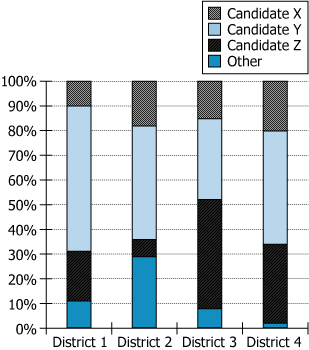Events & Promotions
|
|

GMAT Club Daily Prep
Thank you for using the timer - this advanced tool can estimate your performance and suggest more practice questions. We have subscribed you to Daily Prep Questions via email.
Customized
for You
Track
Your Progress
Practice
Pays
Not interested in getting valuable practice questions and articles delivered to your email? No problem, unsubscribe here.
- Nov 19
12:30 PM EST
-01:30 PM EST
Learn how Keshav, a Chartered Accountant, scored an impressive 705 on GMAT in just 30 days with GMATWhiz's expert guidance. In this video, he shares preparation tips and strategies that worked for him, including the mock, time management, and more - Nov 18
11:00 AM PST
-12:00 PM PST
Join us in a live GMAT practice session and solve 30 challenging GMAT questions with other test takers in timed conditions, covering GMAT Quant, Data Sufficiency, Data Insights, Reading Comprehension, and Critical Reasoning questions. - Nov 20
01:30 PM EST
-02:30 PM IST
Learn how Kamakshi achieved a GMAT 675 with an impressive 96th %ile in Data Insights. Discover the unique methods and exam strategies that helped her excel in DI along with other sections for a balanced and high score. - Nov 22
11:00 AM IST
-01:00 PM IST
Do RC/MSR passages scare you? e-GMAT is conducting a masterclass to help you learn – Learn effective reading strategies Tackle difficult RC & MSR with confidence Excel in timed test environment - Nov 23
11:00 AM IST
-01:00 PM IST
Attend this free GMAT Algebra Webinar and learn how to master the most challenging Inequalities and Absolute Value problems with ease. - Nov 24
07:00 PM PST
-08:00 PM PST
Full-length FE mock with insightful analytics, weakness diagnosis, and video explanations! - Nov 25
10:00 AM EST
-11:00 AM EST
Prefer video-based learning? The Target Test Prep OnDemand course is a one-of-a-kind video masterclass featuring 400 hours of lecture-style teaching by Scott Woodbury-Stewart, founder of Target Test Prep and one of the most accomplished GMAT instructors.
Kudos
Bookmarks
Dropdown 1: 2
Dropdown 2: Z
Be sure to select an answer first to save it in the Error Log before revealing the correct answer (OA)!
Difficulty:
 5%
(low)
5%
(low)
Question Stats:
93% (01:36) correct 7%
(02:06)
wrong
7%
(02:06)
wrong  based on 1170
sessions
based on 1170
sessions
History
Date
Time
Result
Not Attempted Yet

For each of four voting districts (Districts 1 through 4), the graph shows the percent of the voters in that district who voted for each of the three major candidates (Candidates X, Y, and Z) for mayor of a certain town, and the percent who voted for a candidate other than these three.
Select from the drop-down menus the options that create the most accurate statement based on the information provided.
Voters in District 4 were more than three times as likely as voters in District to have voted for Candidate .

For each of four voting districts (Districts 1 through 4), the graph shows the percent of the voters in that district who voted for each of the three major candidates (Candidates X, Y, and Z) for mayor of a certain town, and the percent who voted for a candidate other than these three.
Select from the drop-down menus the options that create the most accurate statement based on the information provided.
Voters in District 4 were more than three times as likely as voters in District to have voted for Candidate .
ID: 700274
ShowHide Answer
Official Answer
Dropdown 1: 2
Dropdown 2: Z
Kudos
Bookmarks
This question doesn't look like a correct one. With only percentage how can one understands the number of voters? There is fundamentally wrong.
Posted from my mobile device
Posted from my mobile device
Kudos
Bookmarks
gmatt1476
This is a stacked bar graph.
Voters in District 4 were more than three times as likely as voters in District ___ to have voted for Candidate ___.
We need voters of district 4 to be more than thrice as likely as some other distirct to vote for a particular candidate. Looking at the graph, we see that district 4 did not vote more than 3 times any other district for candidate X. Its grey segment of the bar would have been at least 3 times more than the grey segment of some other bar.
Same is true for the light blue segment so candidate Y is also not possible.
District 4's black segment is much bigger than district 2's black segment. Note that district 4's black segment covers more than 3 intervals of the Y axis while district 2's black segment covers less than 1 interval of the Y axis.
Hence, Voters in District 4 were more than three times as likely as voters in District 2 to have voted for Candidate Z.
ANSWER: 2, Z














